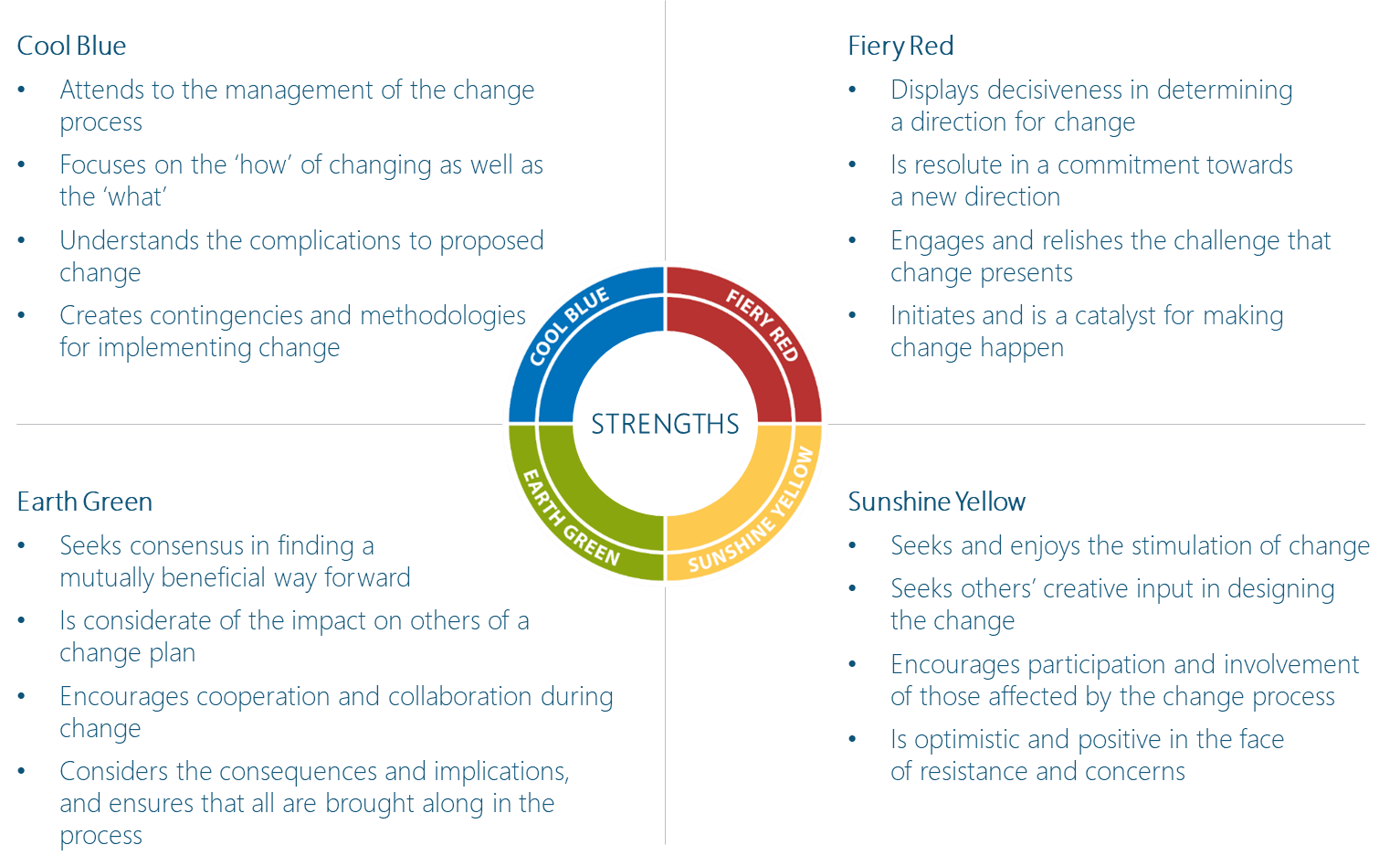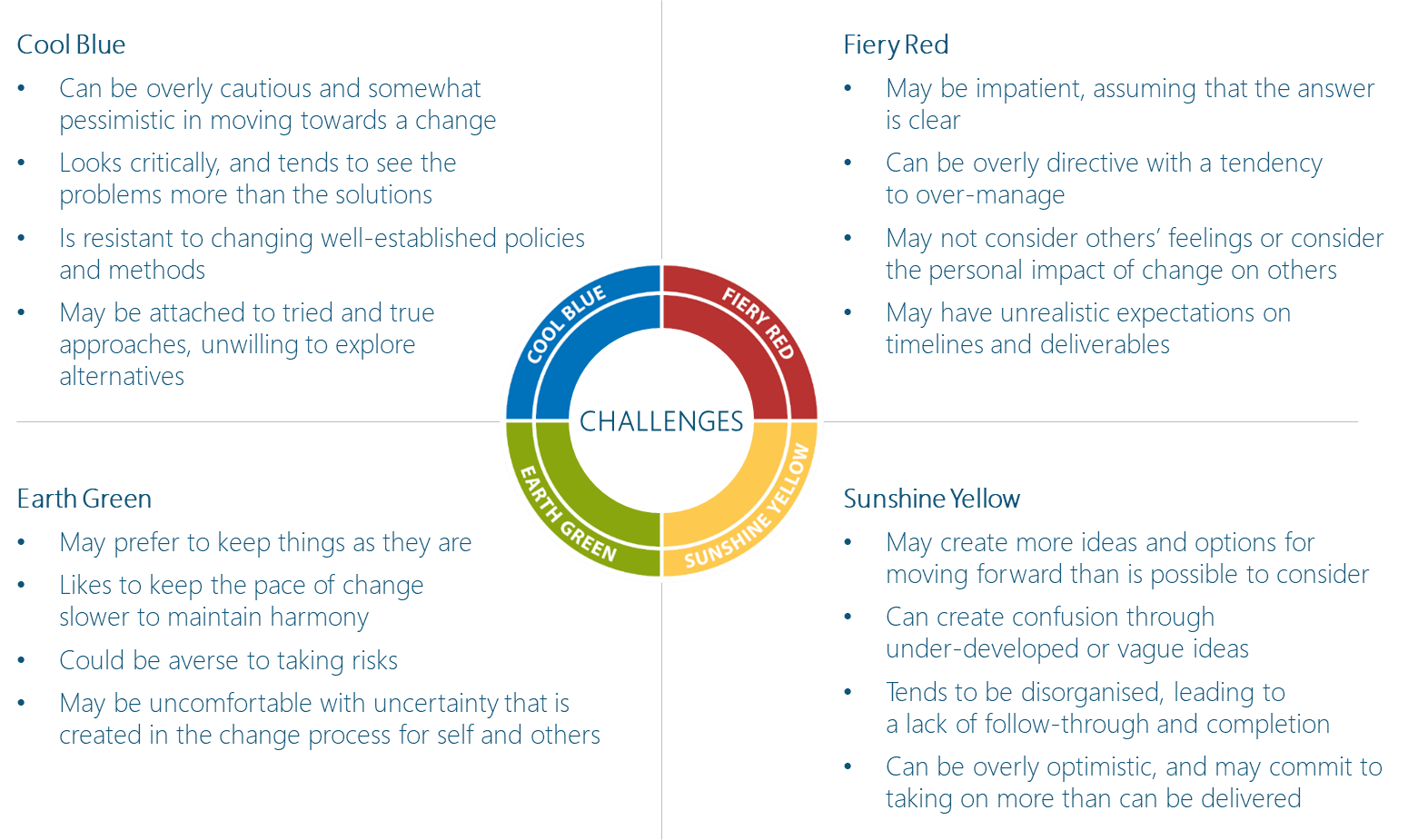Change can bring out intense reactions.
We’ve all met colleagues who seem to relish new challenges and situations and who keep an open mind about the impact of change. They seize the moment, get creative and inspire others to embrace it.
It isn’t the changes that do you in, it’s the transitions - -William Bridges
But more often than not, the major causes of change - restructuring, a new leader, a new mix of colleagues, a new significant process, or a crisis - are viewed as a threat, leading to stress, fear and change resistance.
The threat might concern our identity or our perceived ability to contribute in the new setting. We might believe that disruption will destabilise the team and its progress, especially if the change is imposed or enforced.
Emotions during change are complex, dynamic, contextual and personal; no two people will react the same. Apparent ‘resisters’ might worry about the usefulness of their skillset, their relationships, their uniqueness, their future relevance, their self-esteem, and their vision of their own future. In addition to fear of the unknown, they might worry about the extra workload that can come with the practicalities of change.
Maybe you’re a leader who has to manage an incoming change, or more to the point, manage how your team responds to it. And given that change is seemingly ever-increasing at work thanks to numerous external factors including the AI boom, the return to office/hybrid working and persistent economic instability, we might all benefit from learning how to be more comfortable with it.
Managing through change resistance, where to start?
A good starting point with change management is to remember that readiness for change is about being people-centric, not change or process-centric. We need to look at how team members think, how they make their decisions, and how they view their options. We need to dig deeper into why change feels so hard and how we can navigate it better.
It goes without saying that communication and leadership are crucial ingredients in helping people adapt to change. Organisational leaders and team leaders need to share a compelling vision for the new way of working. They need to effectively communicate the ‘why’ and not just the ‘what’ of change and offer practical and individual support at each stage of change.
But the other vital part of reducing resistance to change is to get more familiar with where resistance comes from in the first place.
‘Embracers’ can help ‘resisters’
Resisting change can cause obstacles to productivity, communication and the bottom line. As a result, more adaptive, responsive leaders and other natural change-embracers may find themselves getting impatient if more cautious team members resist new developments.
Before we judge or berate ‘resisters’, it’s important to look at why change might be a different issue for different people and to recognise that the same support might not be right for everyone.
It’s worth also considering how embracers can help resisters.
Focus on change resilience, not change resistance
One of the strongest causes in people frustrated with organisational change is that they expect it to be a linear and direct journey.
Helping people accept that there’s not always a straight line from point A to point B can help engage their resilience in the change process.
Training managers and team leaders can help colleagues choose resilience in the face of change by supporting their ability to foster a growth mindset.
We know from psychologist and author Carol Dweck that growth mindset individuals believe they have the ability to learn and develop any skill that their environment demands of them. Adopting this approach helps us gain the perspective and big-picture thinking to not be deterred by the inevitable bumps in the new road.
Help people rationalise, not run away
In his 1991 book, “Managing Transitions”, organisational change expert William Bridges stressed the importance of transition, not the change act itself.
“It isn’t the changes that do you in, it’s the transitions. Change is not the same as transition. Change is situational: the new site, the new boss, the new team roles, the new policy. Transition is the psychological process people go through to come to terms with the new situation. Change is external, transition is internal.”
When change occurs, one of the biggest barriers to acceptance is that employees feel unprepared to navigate the transitional period.
We typically go through three phases of transition (ending phase, neutral zone and new beginnings), but the amount of time we each take in each phase will vary based on the type of change we’re experiencing and on our personality.
Understanding that others around us may be in a different phase is the key.
Help people respond instead of react
Building structured self-awareness and others-awareness is also paramount.
If you’re a happily disruptive leader, this is more important than ever. For some people, change is an energiser, a motivator; they seek change and appear to thrive on it. For others, change is experienced as exhausting and demotivating, something to be endured.
Knowing how change affects each team member can inform your strategies to develop their resilience to and engagement in change.
Understanding and how different reactions to the stress of change may reflect our personality preferences, and accepting those preferences, can provide huge breakthroughs in productivity.
“Things were fine the way they were…”
Which concern might bother which ‘type’ of person? Your team members will all have different interpersonal preferences (or different colour energies, to use the Insights framework) and those different colour energies are likely to ask one of these four questions:
- What’s the factual-based rationale for this change? (Cool Blue)
- What will the outcome or results of the change be? (Fiery Red)
- How does this change fit into the vision/big picture? (Sunshine Yellow)
- What impact is the change going to have on us/me? (Earth Green)
At first sight of impending change, we might instinctively reach for the strengths of our dominant colour energy, but helping people access the strengths of the other energies is like ‘stocking the toolkit’ to tackle any eventuality. That way we have more in our reserves, increasing our coping mechanisms, adaptability and quick response to changing circumstances.
Consider how your different team members, all leading with different colour energies and energised by different scenarios, might react to change. Ask yourself what questions they will ask themselves, what they might ask you and what they’ll feel most stressed about.
By helping them stretch out of their natural comfort zone and think differently about how they might approach enforced change, you’ll be helping them choose how to respond internally to what’s happening externally.
Colour energies during times of change - strengths

Colour energies during times of change - challenges

Let’s keep in mind too that people tend to resist change most of all because of:
- self-interest: people fear the effect that change will have on them
- misunderstanding and lack of trust: people fear that management don’t have their best interests at heart
- different opinions: it’s felt that those who are initiating change aren’t resolving a problem in the right way
- low tolerance for change: people sometimes feel they cannot change or handle a transition
Ultimately, our colleagues can choose to resist at various points of the process. Whether it is possible to force people to engage is debatable, although it’s worth making resisters aware of the consequences of not engaging. Perhaps far more powerful though is to listen non-judgementally and understand the specifics about why someone is finding it hard to engage.
Tips for leading change:
Understand and value others’ concerns - Create a way to communicate with employees about new initiatives and their progress. Ask them what their concerns are when describing the vision behind the changes. It’s the first step to shifting mindset.
Identify team members who support the change - These people are your advocates for new ways of working. Give them a platform and ensure they participate in forums about the change so that their voices can be heard.
Open conversation - Build in as much certainty as you can by giving information on what is going to happen and when, what aspects will change and what will stay the same. People are more likely to become stressed and assume worst possible outcomes when they don’t feel in control.
Offer resources - Employees may feel very unprepared to handle the changes. Provide training, resources and equipment - anything that will not only help them to adapt, but also to excel in the changed environment.
Timing is everything – Introduce change in measured doses, to give employees a chance to acclimatise. It’ll create less interruption to achieving team goals and ideally create more on-board, more productive employees who feel equipped and more personally ready for any further change.
To understand more about types of change, and the difference between change, transition and transformation, Insights new programme, Thriving Through Change, was designed for those organisations that have experienced Insights Discovery and are ready to support their people through that next step of thriving through change.



